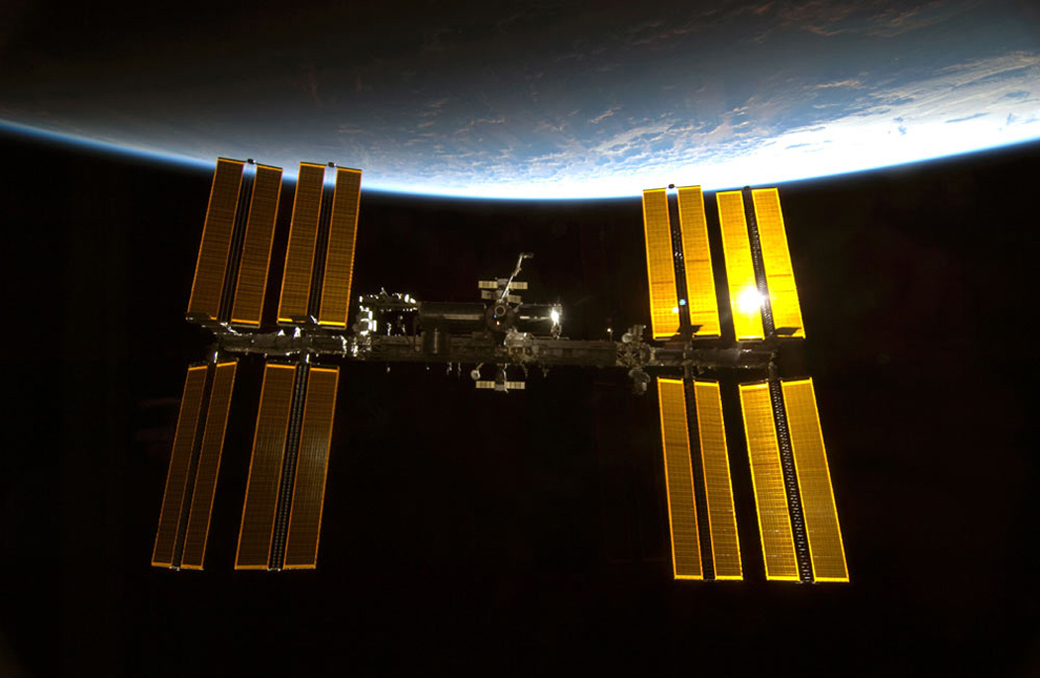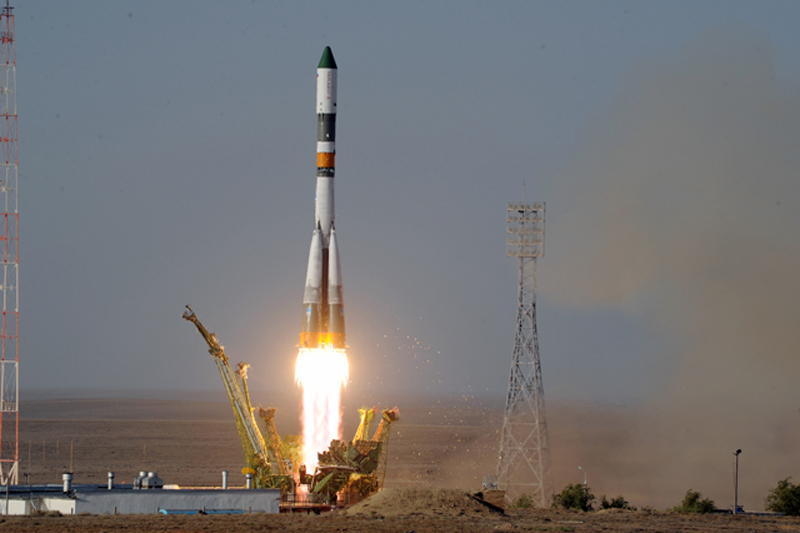
This story was updated at 12:30 p.m. EDT.
The International Space Station may have to start operating without a crew in November if Russian engineers don't figure out soon what caused a recent rocket failure, NASA officials announced today (Aug. 29).
The unmanned Russian cargo ship Progress 44 crashed just after its Aug. 24 launch to deliver 2.9 tons of supplies to the orbiting lab. The failure was caused by a problem with the Progress' Soyuz rocket, which is similar to the one Russia uses to launch its crew-carrying vehicle — also called Soyuz — to the station.
Currently, six astronauts reside on the space station. They shouldn't be unduly affected by the Progress crash, NASA officials said, because they have enough supplies to last a while on orbit.
But three of these astronauts are due to return to Earth next month, and the rest are scheduled to come back in mid-November. At the moment, the Soyuz is the only way to get astronauts to and from the station. So if the rocket anomaly isn't identified and fixed soon, a fresh crew won't be able to reach the orbiting lab before the last three spaceflyers head for home. [Photos: Building the International Space Station]
Unmanned for the first time in a decade?
That situation would leave the $100 billion orbiting lab unmanned for the first time since 2001. Still, it wouldn't be a disaster, according to NASA officials.
Get the Space.com Newsletter
Breaking space news, the latest updates on rocket launches, skywatching events and more!
"We know how to do this," NASA's space station program manager Mike Suffredini told reporters today. "Assuming the systems keep operating, like I've said, we can command the vehicle from the ground and operate it fine, and remain on orbit indefinitely."
NASA would of course prefer to keep some crew aboard the orbiting lab, Suffredini added. Leaving the station unmanned would cut back significantly on the scientific research being done 240 miles (386 kilometers) above the Earth. In the wake of the space shuttle's retirement last month, NASA has repeatedly stressed the importance of that research, and the scientific potential of the station.
But the timing just might not work out. Two Soyuz spacecraft are currently docked to the station to take its six astronauts home. The vehicles are only rated to spend about 200 days in space, so they'll have to depart soon. [How Russia's Progress Spaceships Work (Infographic)]

Light at the landing site
Lighting conditions at the Soyuz's Kazakhstan landing site are also an issue. NASA and the Russian space agency mandate that landings must occur at least one hour after dawn and one hour before dusk, to facilitate better search and rescue operations should any be required.
The lighting window closes for about five weeks on Sept. 19 for the first crew and around Nov. 19 for the second. Waiting for a new window to open would stretch the Soyuz spacecraft beyond their 200-day ratings in both cases, Suffredini said.
So all six astronauts on the space station will almost certainly have left the orbiting lab by mid-November. Russian engineers are working hard to give crewed Soyuz launches the best chance to meet that deadline; the next one is slated to blast off Sept. 21, but that's almost certainly not going to happen, Suffredini said.
Russia has formed a commission to determine the cause of the Progress crash, and to figure out how to fix it. But NASA says it won't rush anything, as astronaut safety is its chief priority.
"We'll just see how it plays out," Suffredini said.
NASA won't put any crews on a Soyuz until the rocket has had several successful unmanned launches, he added. Those could happen relatively soon. Russia plans to use Soyuz boosters to launch a commercial payload and another Progress supply ship by late October.
The Progress crash marked the latest in a string of Russian launch failures over the last 10 months. This series of mishaps has caused some concern among U.S. lawmakers and experts, since NASA will rely on Russia to loft its astronauts to orbit until private American crew-carrying spaceships come online. That could start happening by 2015, officials have said.
You can follow SPACE.com senior writer Mike Wall on Twitter: @michaeldwall. Follow SPACE.com for the latest in space science and exploration news on Twitter @Spacedotcom and on Facebook.
Join our Space Forums to keep talking space on the latest missions, night sky and more! And if you have a news tip, correction or comment, let us know at: community@space.com.

Michael Wall is a Senior Space Writer with Space.com and joined the team in 2010. He primarily covers exoplanets, spaceflight and military space, but has been known to dabble in the space art beat. His book about the search for alien life, "Out There," was published on Nov. 13, 2018. Before becoming a science writer, Michael worked as a herpetologist and wildlife biologist. He has a Ph.D. in evolutionary biology from the University of Sydney, Australia, a bachelor's degree from the University of Arizona, and a graduate certificate in science writing from the University of California, Santa Cruz. To find out what his latest project is, you can follow Michael on Twitter.









